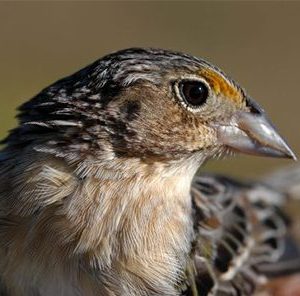Biology Researcher Continues to Protect Wildlife Against Deadly Fire Ants
In 2016 and 2017, the UCF Office of Technology Transfer featured Dr. Joshua King and an eco-friendly invention that he developed to control fire ants cost-effectively. Since then, Dr. King has developed three different system sizes to accommodate various applications. This article includes content from those previous articles and new, updated invention information.
Growing up in a rural community in New England, Joshua King, Ph.D., entomologist and associate professor in the Department of Biology, began his exploration in the life sciences as many children do: outdoors. With a voracious curiosity, King developed a hobby of observing and collecting insects. Inspired by the support and encouragement of his high school life sciences teacher, King decided to pursue biology as a career.
He attended Tufts University and received his B.S. and M.S. in Biology. After a semester abroad in Australia during his junior year, King knew that his academic focus would be on insects. His interests narrowed even more after receiving his Ph.D. in entomology at the University of Florida and during his postdoctoral studies at Florida State University (FSU). He focused his attention on one exotic insect that is a common and painful pest throughout the Southern U.S., from California to Florida: the fire ant.
As part of his postdoctoral work at FSU, King focused on developing non-toxic methods to control fire ant colonies in pastures. If you ever see an anthill—big or small, on the sidewalk, in a field, or even in your backyard—it’s most likely the home of a fire ant colony. Specifically, it is the red imported fire ant (Solenopsis invicta) which is an invasive species that was accidentally imported on shipping crates to the United States in the early 20th century. If you’ve ever had the bad luck of stepping on one of these anthills, the pain from their stings reminds you of how these exotic insects have become such an unwelcome presence. These tiny but fearsome imports are an expensive, persistent problem. According to the FDA, it is estimated that more than $5 billion is spent annually on medical treatment, damage, and control in infested areas. These ants cause roughly $750 million in annual agricultural damage, including veterinarian bills, livestock loss, and crop loss. The fire ant is now, unfortunately, a global pest ant species having invaded throughout Australia and Asia.
Initially, King worked with Walter Tschinkel, Ph.D. at Florida State University, to develop a prototype for controlling ants. The system used a charcoal-fired kiln to heat the water. However, it was unwieldy and had issues with water flow. Despite the design challenges, King remained intent on pursuing an eco-friendly method to control and kill fire ants.
King explained the invention: “It’s a simple idea, using hot water to kill fire ant colonies. In the original version [that King improved upon], you have a giant pot, like a crawfish boil or turkey fryer, that you would take out in the field, boil 20 gallons of water, and pour it on the colony. However, that’s extremely inefficient and takes forever.”
A Successful Tried and Tested Design at UCF
When King came to UCF, he collaborated with an agricultural fabricator to improve the design. Together, they created a high-temperature, high-volume, fuel-powered, mechanized system that can be hauled on a trailer. The Antheater(TM) solution is cost-effective, non-toxic, and environmentally friendly. It uses large amounts of hot water heated on-demand at a temperature of 150°F or higher and applied to ant colonies via a pressure wash wand, immediately killing the ants. This device can provide short and long-term control of fire ants or other ground-dwelling insects such as termites, wasps, and yellow jackets, over hectares of land. Other methods involve chemically treating the fire ant mound or using broadcast baits. However, chemical treatments have a number of shortcomings and cannot be used in a variety of circumstances where applying insecticides is not possible. King’s method is more effective for directly killing mounds and provides instant results. The invention has already proven its value in protecting sea turtle nests and the endangered Florida Grasshopper Sparrow.
One summer, King used the machine at Fort De Soto Park in St. Petersburg, Florida, where endangered and protected sea turtles lay their eggs on the beach. Sadly, the park was losing a large number of hatchlings due to fire ants.
“If there are fire ants foraging near the nests, the hatchlings are in great danger. Fire ants will attack and sting, and sometimes kill, many young turtles. The hatchlings are two to four inches long—they are quite small. The fire ants attack their soft body parts, primarily their eyes and around their mouth and head. The hatchlings are small enough that being stung a few times by fire ants can be lethal,” King said.
King applied for emergency funds from Florida’s Sea Turtle Specialty License Plate program so he could help protect these nests.
“The park staff was actually digging up the nests to avert disaster. I was given these funds to remove fire ants around sea turtle nests for the summer, and it was great. We eliminated greater than 90 percent of the fire ant colonies from around the sea turtle nests and really reduced the fire ant problems. So it was very effective,” he recalled.
 Thanks to the invention, the tiny Florida Grasshopper Sparrow has also benefitted. In 2017, King received $15,500 from the U.S. Fish and Wildlife Federation to use the diesel-powered, hot-water apparatus to blast ant nests that encroach on the endangered sparrows. The federation calls him when they find mounds near sparrow nests. He has published extensively on the life and impacts of fire ants throughout his career. Learn how this endangered tiny bird has a big ally in UCF.
Thanks to the invention, the tiny Florida Grasshopper Sparrow has also benefitted. In 2017, King received $15,500 from the U.S. Fish and Wildlife Federation to use the diesel-powered, hot-water apparatus to blast ant nests that encroach on the endangered sparrows. The federation calls him when they find mounds near sparrow nests. He has published extensively on the life and impacts of fire ants throughout his career. Learn how this endangered tiny bird has a big ally in UCF.
In addition to larger sections of land, such as beaches or pastureland, the invention can also be used for smaller-scale applications, such as your backyard. The invention is currently being tested for use in fruit production systems, including citrus and table grapes, where fire ants can impact fruit growth and agricultural workers.
—
If you’re looking to take the sting out of life with fire ants and other pest species, this technology is available for licensing. Contact the UCF Office of Technology Transfer for more information.

